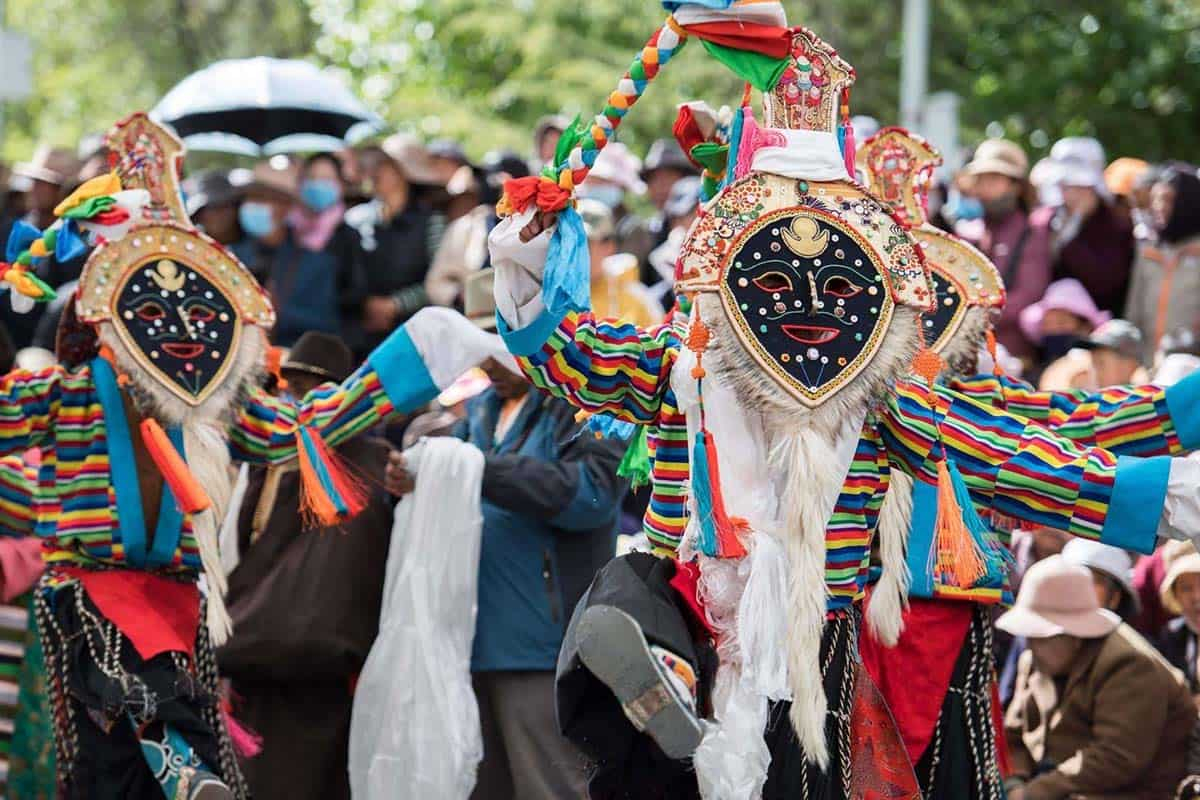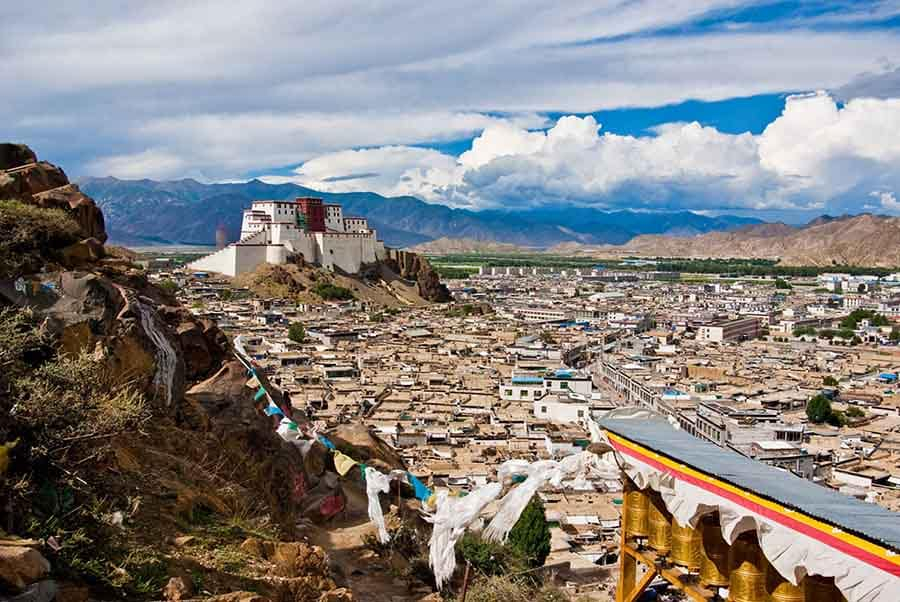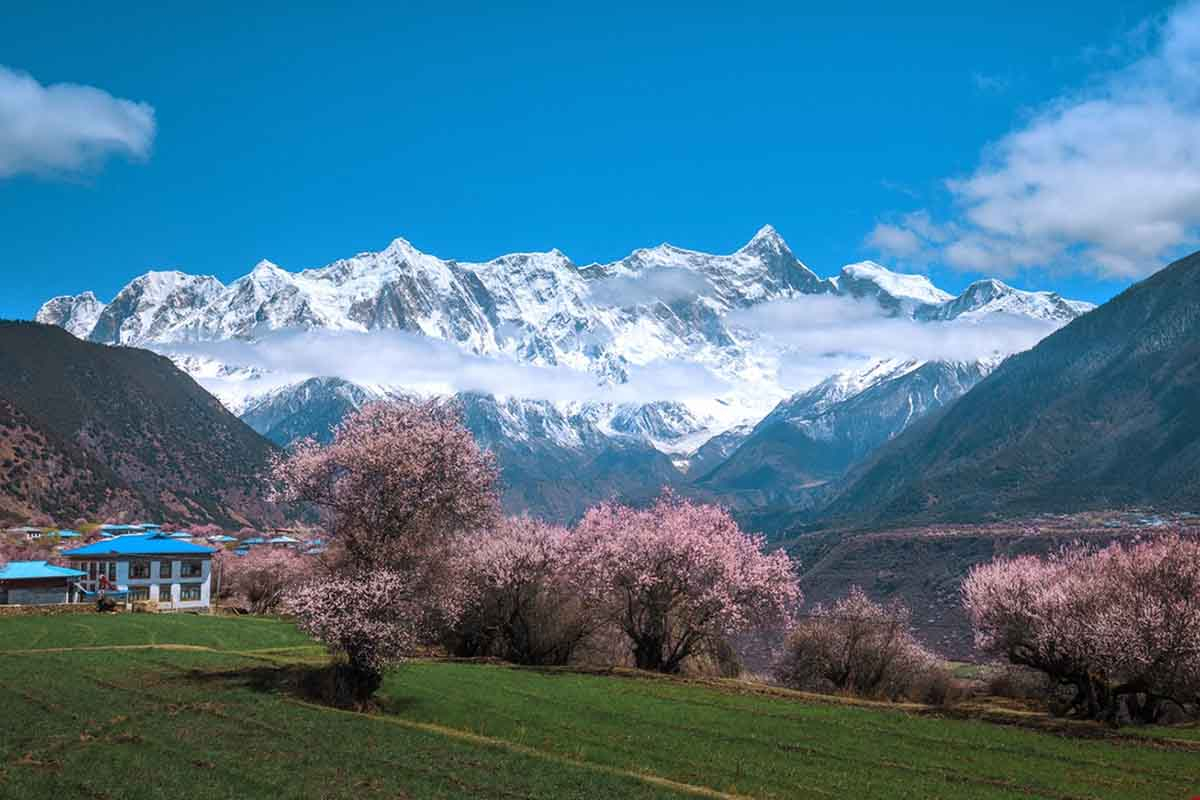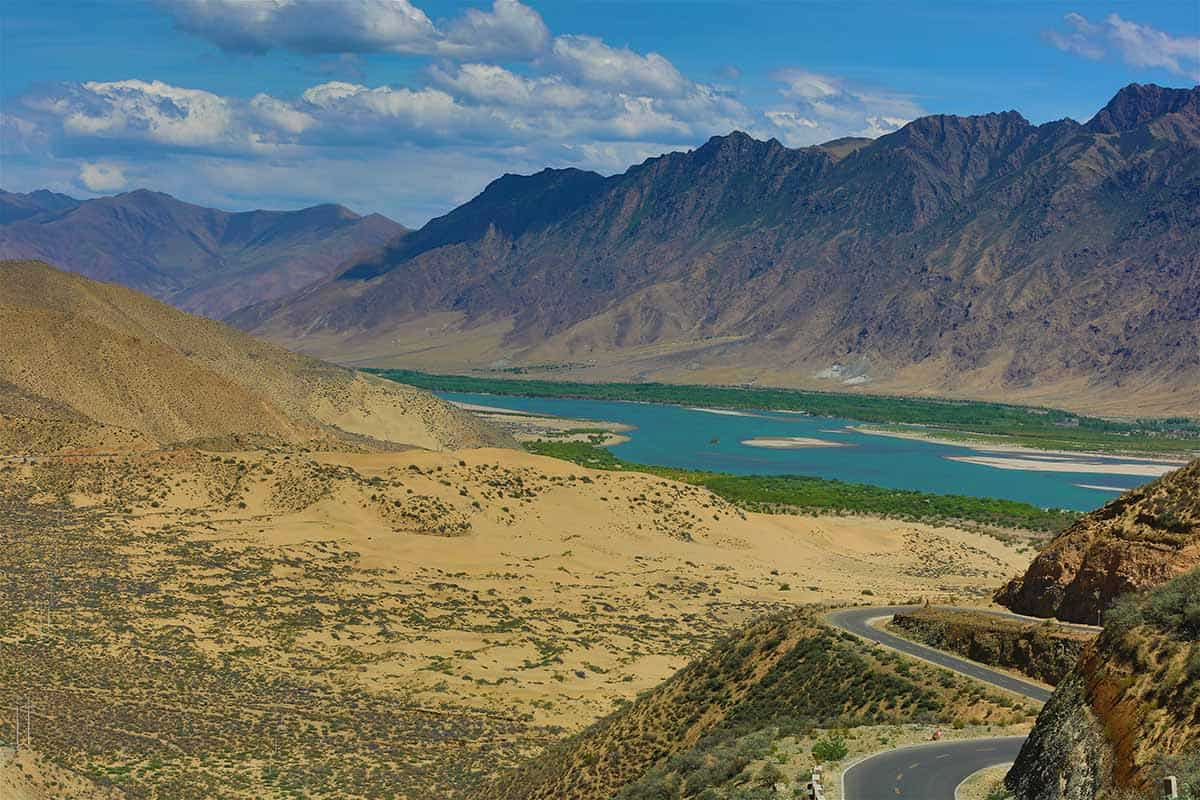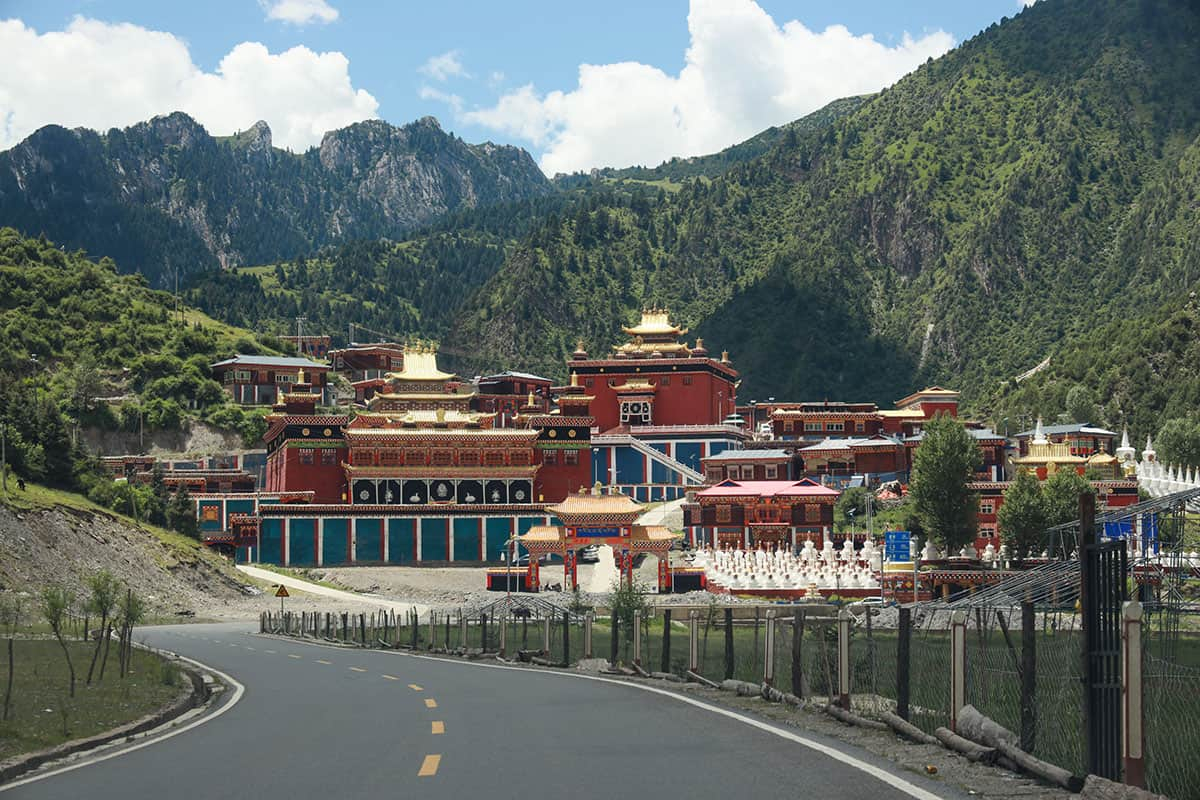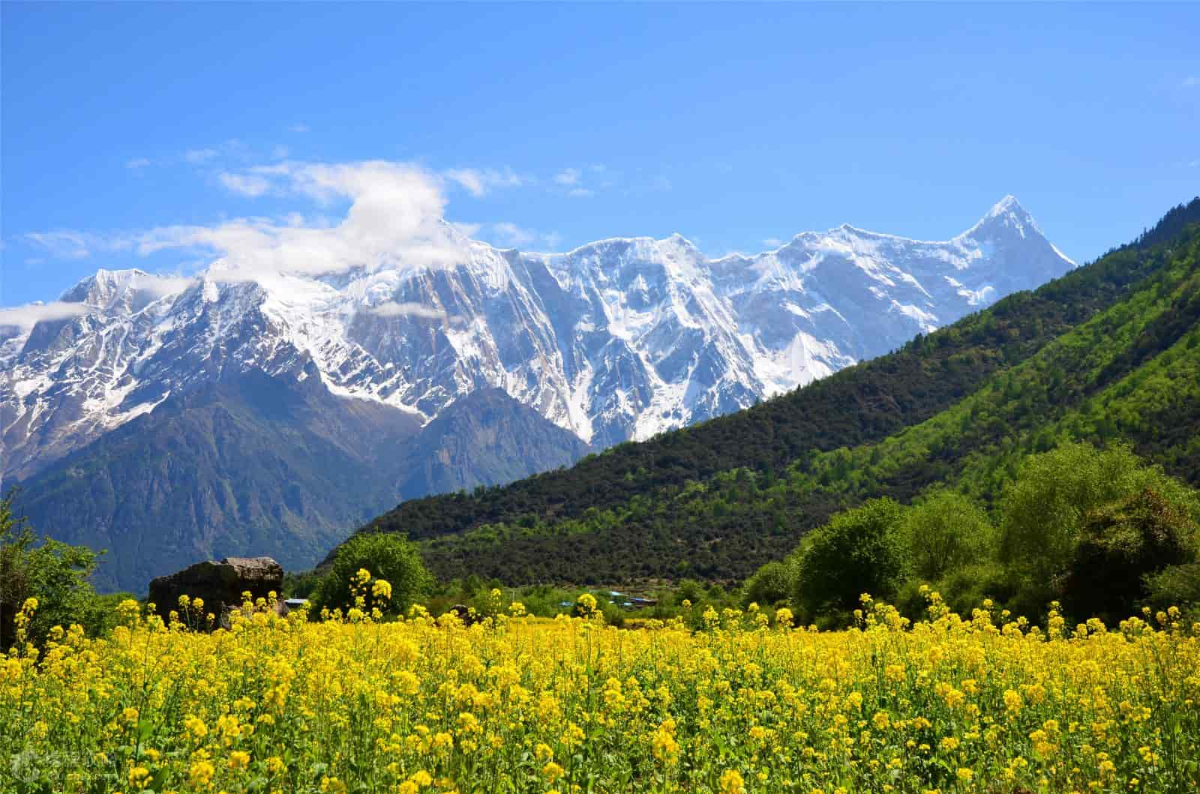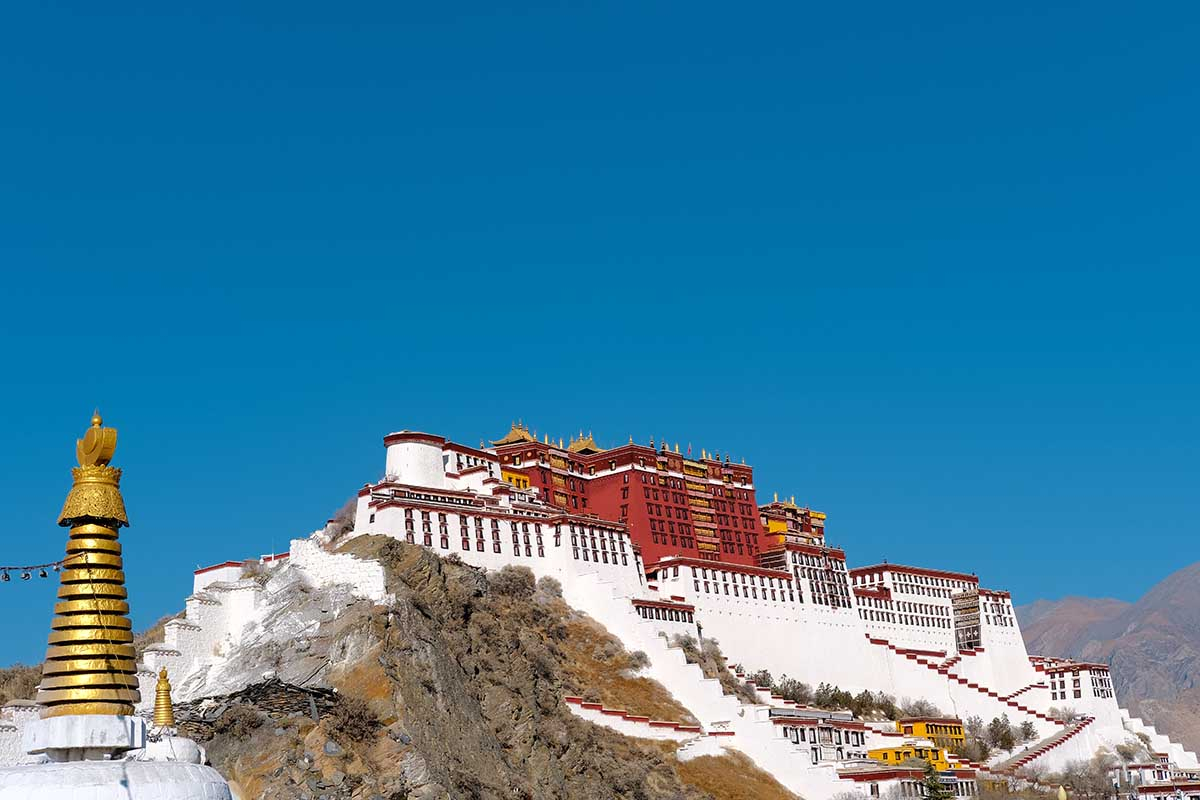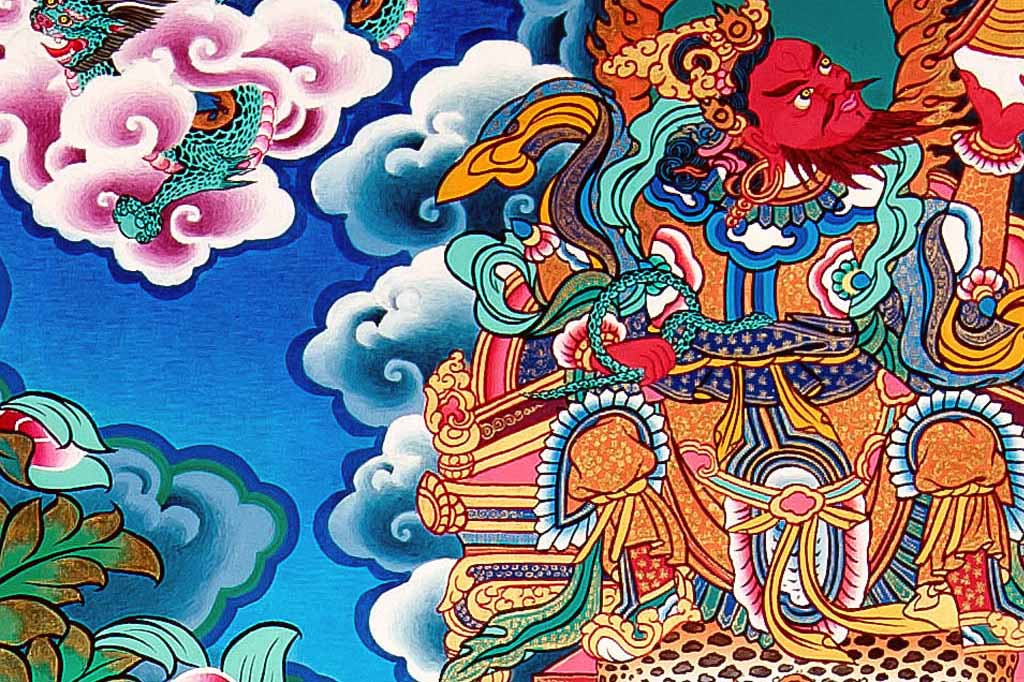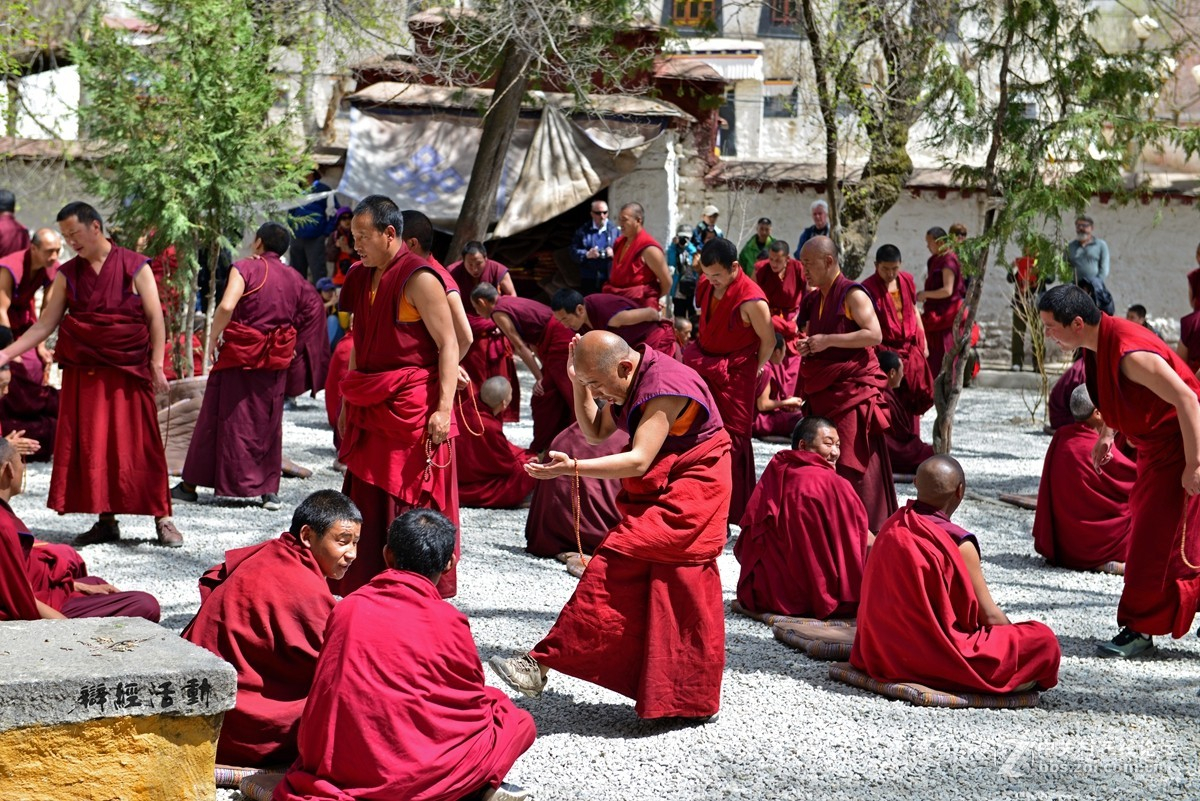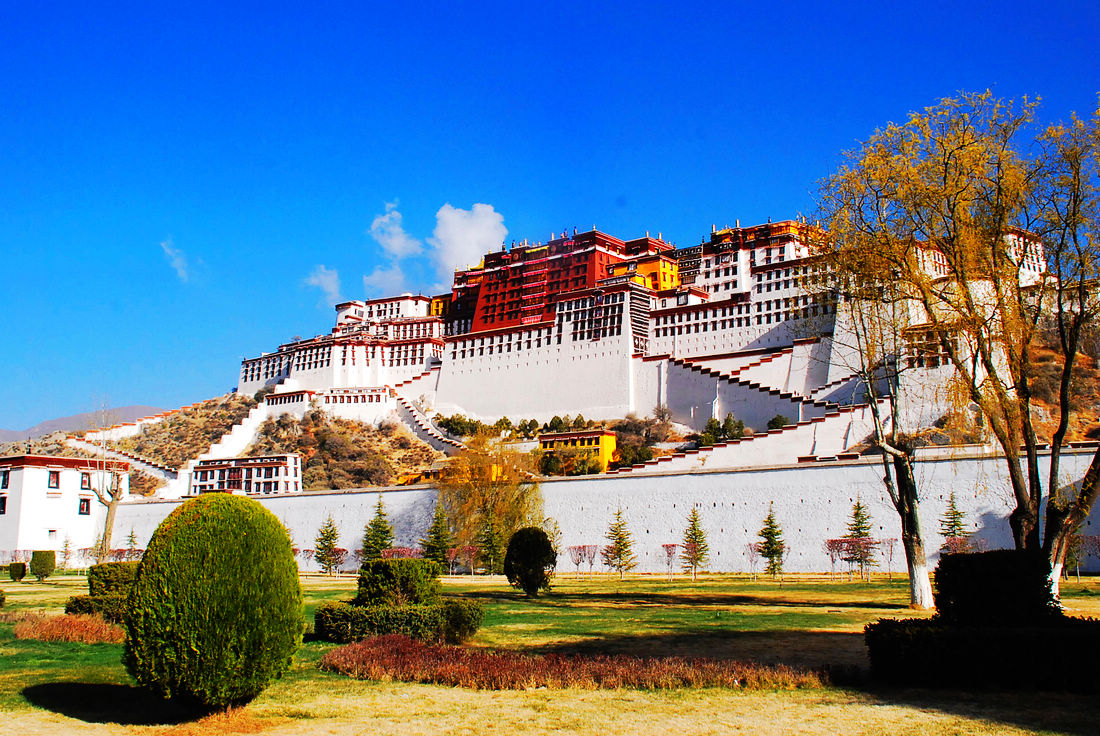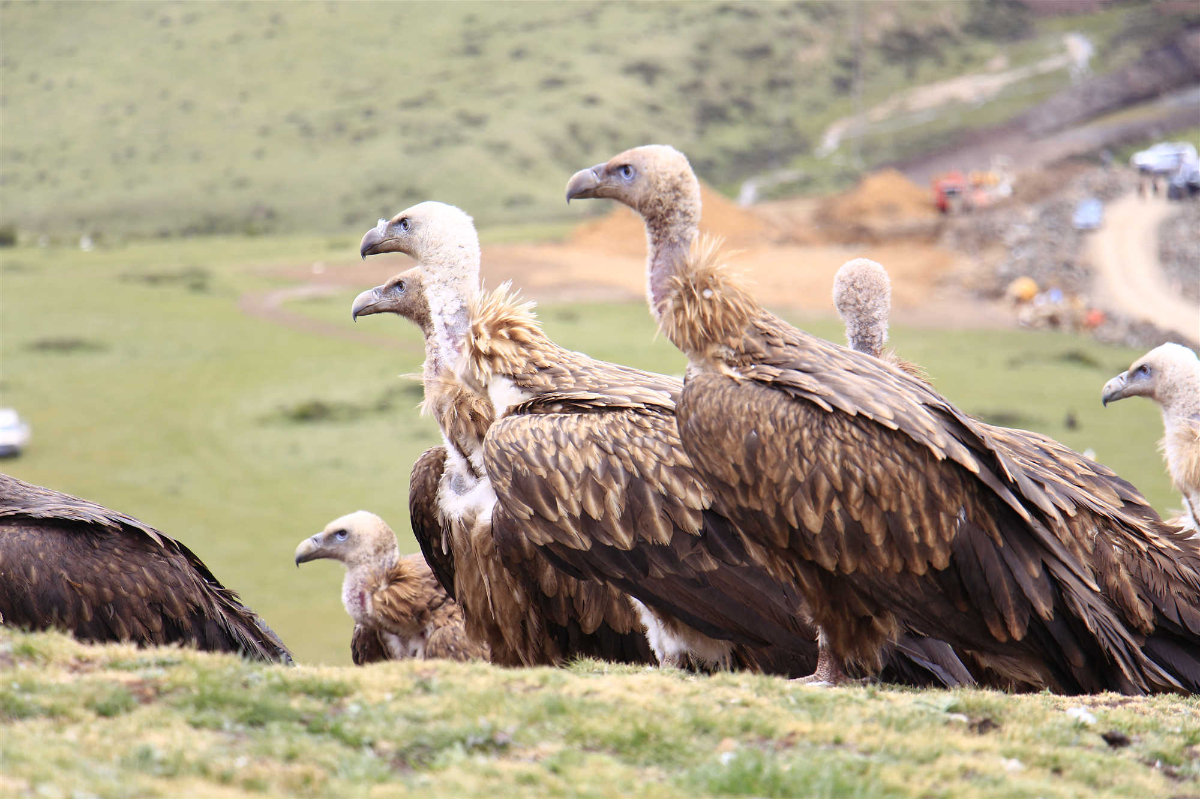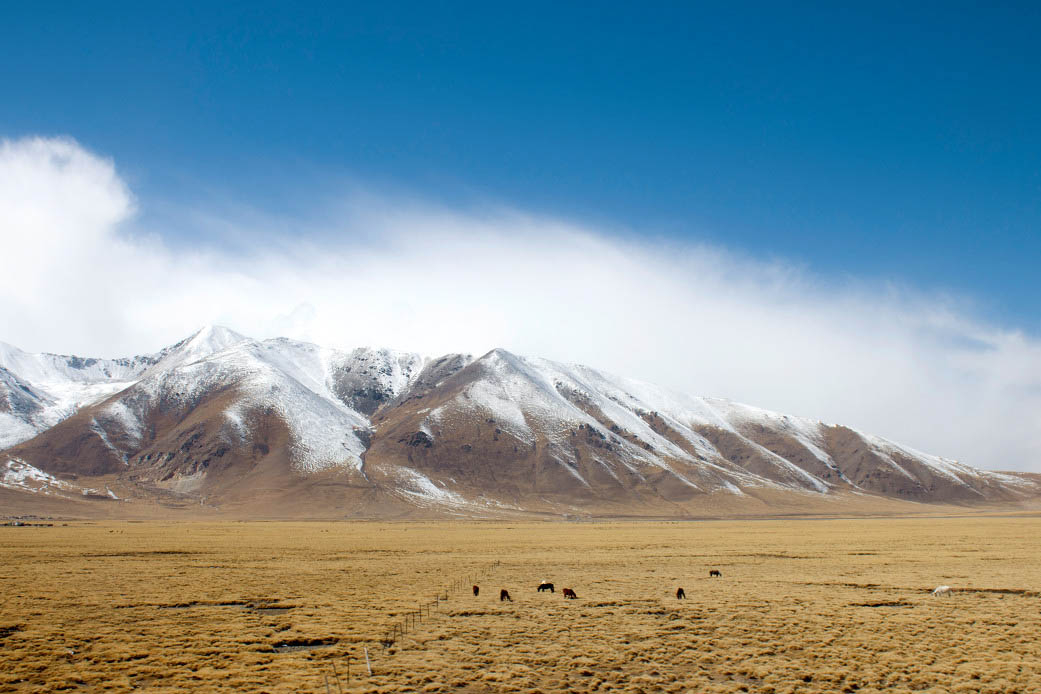The holy city-Lhasa Travel Guide
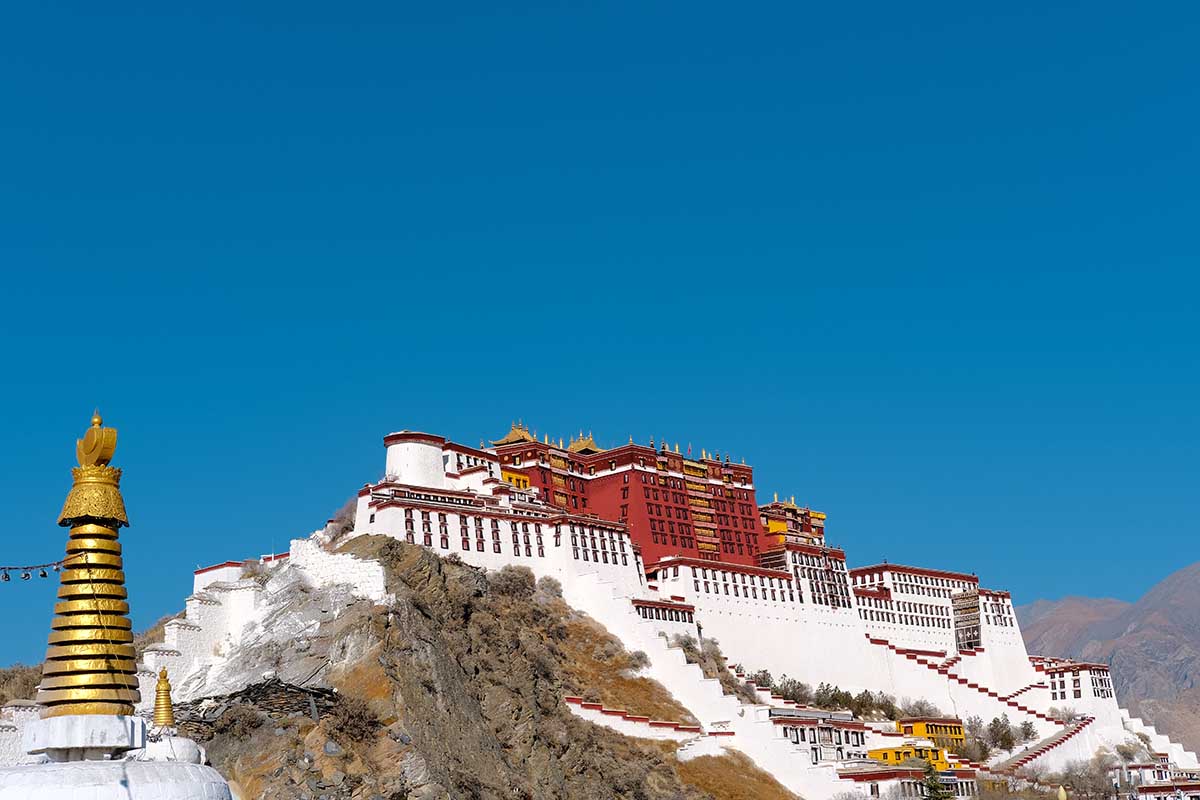
Lhasa, literally means the Place of the Gods, is hidden deep in the spectacular Himalayan Mountains (altitude: 3,700 meters). It is a treasure trove of brilliant palaces, monasteries and temples. The symbol of Tibet, the dominating red and white Potala Palace is the first sight you will see when you enter the holy city Lhasa. For Tibetan people, Lhasa is the holiest city in the world. Every day, travelers and locals rub shoulders on the exotic Barkhor Street to walk the scared “kora”. Jokhang Temple, the spiritual center of Tibet, keeps the most important treasure of Tibet - Jowo Rinpoche, the life-sized (5 foot/1.5m) image of the Shakyamuni at the age of 12 which was said to be created according to the description of the wet nurse of Shakyamuni.
The holy city Lhasa is famous for its beautiful landscapes, thousand-years-old history, unique Tibeatan culture, sunshine & blue sky and friendly local people. The most outstanding highlight is its magnificent palace and temples, such as the famous Polata Palace, Jokhang Temple, Barkhor Street, Drepung Monastery, Sera Monastery, and Norbulingka. The miraculous and beautiful Namtso Lake is about half-day driving from the city. Besides the diverse cultural and scenic sights, you will also have chance to explore authentic Tibetan culture, such as Tibet food cooking, Princess Wenchen Show, etc
Today Lhasa has become the Must-visit destination for travelers because it is the essence of Tibet, the perfect place to experience the best culture of Tibet. Travelers usually stay a couple of days in the city for a short Tibet trip, or start their longer Tibet adventures from Lhasa to Gyantse, Shigatse, Mount Everest, Mount Kailash, etc.
● Lhasa Food&Drinks
On the high-altitude Tibetan plateau, the food is very different from most Asian cuisines, mostly due to the lack of rice in Tibet. The plateau land is unsuitable for the growth of rice, so the main staple of Tibetan food is the hardy highland barley that is grown across the plateau. The most cultivated product in the entire plateau, the barley is used in almost every aspect of Tibetan cuisine, and even has its own recipe, using just ground roasted barley flour and tea.
Typical Tibetan cuisine consists of a great deal of barley and rich meats. Much of the plateau cuisine is centered around yak meat or mutton, dairy products such as butter and yogurt, some of the hardier vegetables such as potatoes, cabbages, and turnips, and noodles.
The three basic and staple foods of Tibet are butter tea, barley and yak meat. Barley, being the most important crop in Tibet, is used extensively in the form of flour.
Tsampa is the most consumed food among the locals of Tibet. It is made out of roasted barley flour and butter tea. It is a staple enjoyed by pretty much everyone. It requires minimal utensils, few ingredients, and very little time to make. The most common way to eat Tsampa is by mixing it with butter tea in a bowl and forming it into small oval balls.
Yak meat is the most popular meat eaten by Tibetans. It’s eaten in various forms like boiled, dried, stewed, steamed, roasted, cooked into curries and fillings. The juicy meat is nutritious and lean and has a slightly sweet flavor.
Also known as "sho", Tibetan Yoghurt is different from the regular one. It is made from yak milk and is much creamier than cow yogurt. The locals generally consume it along with brown sugar, warm steamed rice, etc.
Butter tea is a must-drink of Tibetan meal. Basically, it is boiled strong tea added with ghee and salt. Tibetan people drink butter tea to keep themselves warm and it is usually drunk when eating Tsampa.
Along with traditional Tibetan foods, all kinds of food including Sichuan cuisine, Nepalese and western style food can be enjoyed in Lhasa. Restaurants at all levels also serve delicacies and almost every hotel has western dishes. Most of the restaurants can be found clustered around the Jokhang Temple and Barkhor Street. Therefore, travelers can find places to eat and drink within easy reach.
● Lhasa Weather
Due to its very high elevation, Lhasa has a warm-summer humid continental climate that very closely borders a cool semi-arid climate and a subtropical highland climate , with very dry, frosty winters and wet, warm summers, yet the valley location protects the city from intense cold or heat and strong winds. Monthly possible sunshine ranges from 53 percent in July to 84 percent in November, and the city receives nearly 3,000 hours of sunlight annually. It is thus sometimes called the "sunlit city" by Tibetans. The coldest month is January with an average temperature of −0.3 °C (31.5 °F) and the warmest month is June with a daily average of 16.5 °C (61.7 °F), though nights have generally been warmer in July.[45] The annual mean temperature is 8.79 °C (47.8 °F), with extreme temperatures ranging from −16.5 to 30.4 °C (2 to 87 °F).[46] Lhasa has an annual precipitation of 456 millimetres (18.0 in) with rain falling mainly in July, August and September. The driest month is December at 0.3 millimetres (0.01 in) and the wettest month is August, at 133.5 millimetres (5.26 in). The rainy season is widely regarded the "best" of the year as rains come mostly at night and Lhasa is still sunny during the daytime.
● Best time to visit Lhasa
April to October is regarded as the best seasons for traveling Lhasa.
In particular, the best months are May, June, September or October as July and August are rainy months. Summer is not that hot and winter is not that cold in Lahsa, but it experiences a large difference in temperature from morning to night. Lhasa is in highland area, so a few visitors may have altitude sickness. please take your health checkup to make sure that you are able to adapt to the plateau climate there.
Lhasa enjoys the reputation of “sunlight city” by Tibetans. Spring in Lhasa is dry and windy. So you need to pay attention to add water to your body and mineral water is a good choice.
What’s more, lipstick is also necessary. Generally the May Day Holiday is the beginning of the traveling season.
Summer is the rainy season of Lhasa. Different from other cities, it rains at night and sunny again in daytime. Lhasa enjoys a mild climate, neither too cold in winter nor hot in summer.
The temperature in summer is generally from 10℃ to 20℃. But the ultraviolet radiation is so strong that you has to protect your skin well. The sunglasses, sun cream, lip balm and hat should be brought.
The weather is autumn of Lhasa is also dry and windy. It has been in gold colour as autumn arrives. Most of trees have turned to yellow by the mild sunlight while those red maple leaves dress up the park as if the spring doesn’t go away.
Most people think of Lhasa as being extremely cold. In fact, winter in Lhasa is not that cold. Lhasa has a cool and dry climate with frosty winter. There are some features in winter of Lhasa: blue sky and bright sun, in particular. And it is the best season to see snow-capped mountains.
● High Altitude Sickness Tips
It is easy to suffer from High Altitude Sickness (HAS) for people who haven’t acclimatized themselves well to the plateau especially in the night at Namtso Lake as the lake is located more than 4700 meters above sea level. Our suggestion is that you can spend several days in Lhasa and surrounding area where the altitudes are lower for acclimatization. When your body is ready, you can go to Namtso Lake. If you have no confidence on your physical condition, don’t manager with the effort to stay a night at Namtso Lake because the HAS usually occurs in the night.
After getting to Namtso Lake, you should keep yourself warm all the time. Don’t remove your jacket even the temperature casually or you may catch a cold, which is very dangerous on the plateau. Avoid fast and long walking and other strenuous activities.
- HOTEST
- RECOMMEND
